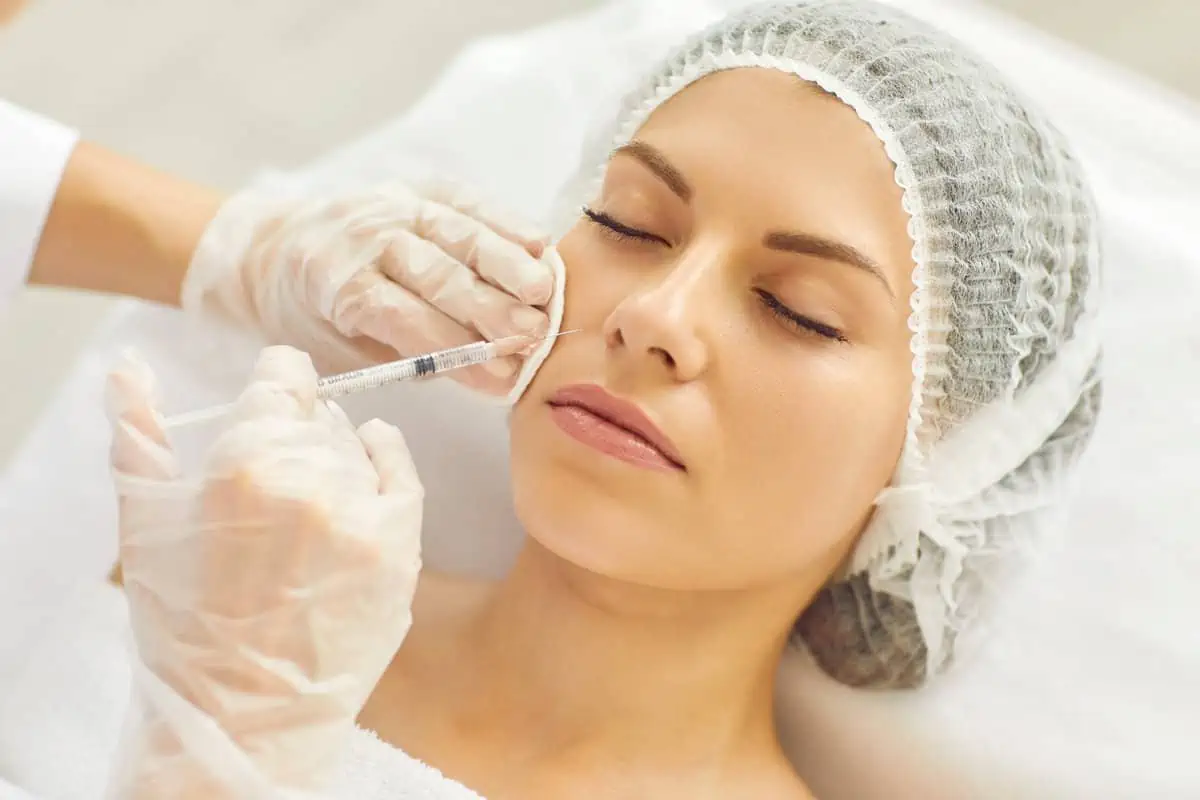Chloasma is a condition of pigmented patches of hyperpigmentation commonly found on the face. These spots are formed in response to hormonal changes during puberty, pregnancy, and sun exposure. It’s persistent and requires constant treatment being that there is no cure. This article will discuss the causes of melasma and how to deal with it.
What is Melasma?
Melasma is a skin condition that causes brown patches on your face. It usually affects your cheeks, forehead, upper lip, nose, and chin.
This condition can occur in people with darker skin tones and those with lighter skin. Certain medicines, sun, and heat exposure can make it much worse. Although melasma is more common in women than men, it can affect both sexes.
The cause of melasma isn’t known. It may be linked with hormonal changes during pregnancy, birth control pills, and hormone replacement therapy (HRT). Pregnant or breastfeeding women are more likely to develop melasma than other women.
It can be exceptionally bothersome during summer when you are getting more sun exposure. There is no cure for melasma, but there are treatments that can improve its appearance.
Symptoms of Melasma
The main symptom of melasma is brown patches on your face. These patches may be more evident in sunlight or under bright lights. They’re often unevenly colored and can be the same shade or have different shades within each patch.
If you have melasma, it’s unlikely that you’ll only have one patch of this type of skin discoloration – there may be several. You’ll usually notice them after years of sun exposure.
Other symptoms of melasma include :
- Flat, red, and brown patches that increase in size over time.
- Darker brown spots are more extensive than freckles but smaller than birthmarks.
Factors That Trigger Melasma To Occur
Melasma is a common skin condition that affects the face, neck, chest, and upper arms. It’s often triggered by sun exposure and hormonal changes, but other factors can also play a role.
1. Hormonal Changes
Melasma is more common in women than men, and the condition often occurs during pregnancy or menopause but can come up anytime. Pregnancy-related melasma typically starts around the first trimester of pregnancy and goes away within a few months after delivery. Postpartum melasma sometimes shows up between six months and two years after giving birth.
Menopausal melasma is common because your hormones change when you stop producing estrogen during menopause. This can also happen if you take medications that affect hormone levels (such as birth control pills or hormonal replacement therapy).
2. Sun Exposure
The sun is one of the most common causes of melasma. Ultraviolet (UV) light can trigger changes in the pigment-producing cells in your skin and cause them to produce more melanin than usual. This makes your skin look darker in patches, but it’s not dangerous. Ultraviolet light can come from a tanning bed, the sun, or fluorescent lights. You can also get melasma from being out in the sun for too long without wearing sunscreen or protective clothing. This is especially true if you have fair skin, burn easily, and do not use sunscreen regularly.
3. Pregnancy
If you’re pregnant or breastfeeding, your hormones can cause melasma to get worse. When pregnant, melasma is called chloasma and can occur on your cheeks, forehead, and upper lip. Chloasma usually goes away after you give birth or stop breastfeeding.
4. Stress
The stress hormone cortisol can make melasma worse, especially if you’re under a lot of stress. Stress can also cause you to tan less easily and burn faster than average. So, if you’re stressed out, wear sunscreen every day and stay out of the sun.
5. Medications
Some medications can cause melasma, including birth control pills and hormone replacement therapy (HRT). Other medications that may also contribute to melasma are blood pressure medications such as beta-blockers, some anti-depressants, and some antibiotics.
Tips for Dealing With Melasma
1. Stay out of the sun.
Sunlight can make melasma worse, so avoid it when possible. Apply a broad-spectrum sunscreen with an SPF of 30 or higher every day and reapply it at least every two hours if you’re outside for long periods. Wear a hat and sunglasses too.
2. Wear protective clothing
Clothing can help protect you from the sun’s harmful rays, especially around the neck. Not all fabrics provide equal coverage. Choose light-colored, loose-fitting clothes made of tightly woven fabric if you spend a lot of time outdoors in sunny areas. Lighter colors reflect more UV radiation away from your skin than dark ones. Also, wear a wide-brimmed hat with a chin strap that prevents it from flying off in the wind and exposing your face to the sun.
3. Avoid tanning beds, which expose your skin to high levels of UVA and UVB radiation.
Tanning beds are more dangerous than natural sunlight because they simultaneously emit harmful rays. Tanning beds can also cause sunburns, premature aging, and eye damage. The UVA rays penetrate deep into your skin, causing wrinkles and other signs of aging, while the UVB rays cause sunburns. So if you don’t want to deal with melasma, avoid tanning beds.
Final Thoughts
Melasma is a prevalent skin condition that affects many people. It can be embarrassing and difficult to treat, but many treatments can help you get rid of your hyperpigmentation. Try to practice all the methods above in order to successfully control your melasma.
Misty Med Spa & Skin Rx has an experienced dermatology team who offers different treatments to get your melasma under control.







